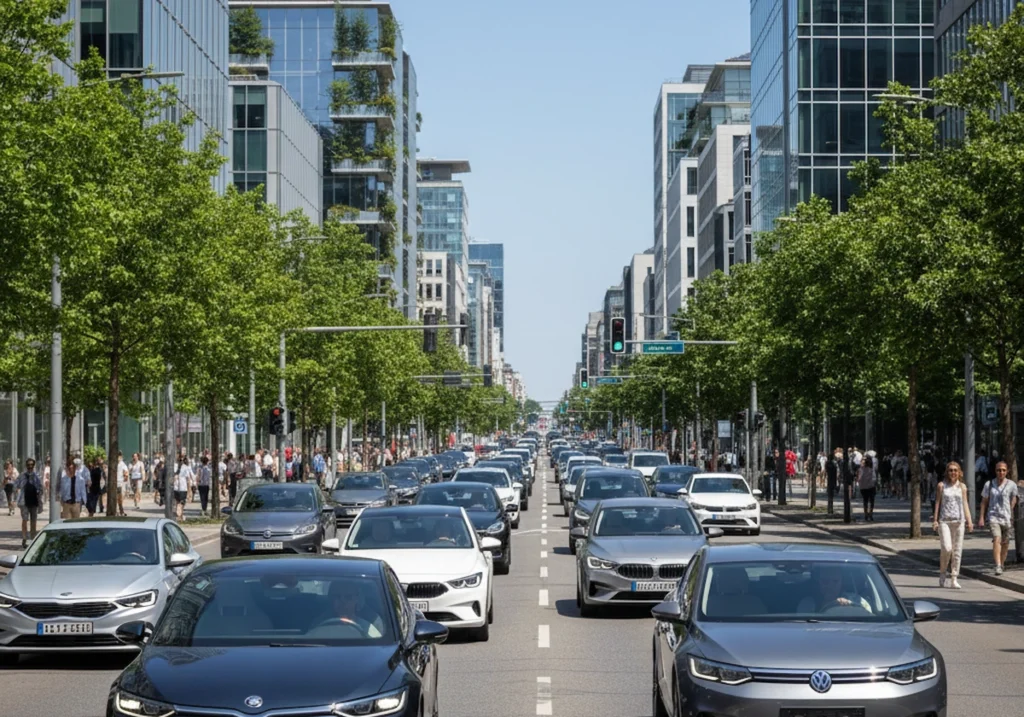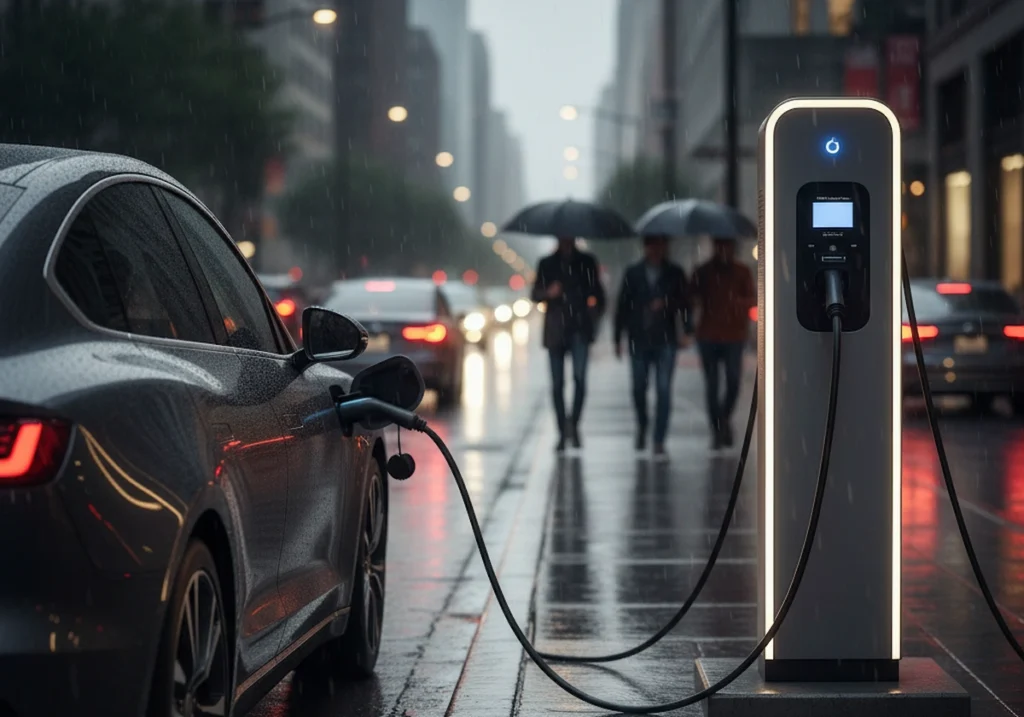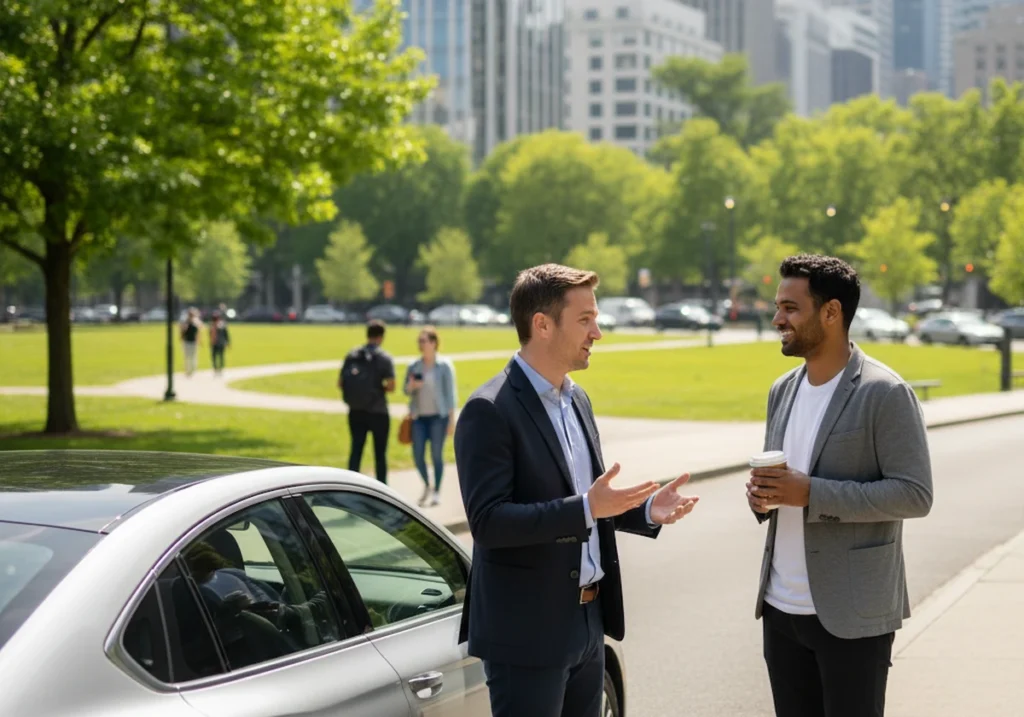If you’re stuck in city traffic every morning, breathing exhaust fumes and watching petrol prices climb, this situation affects millions of urban drivers daily. That’s exactly why electric mobility is gaining momentum in cities everywhere.
In this guide, we’ll break down how electric vehicles are reshaping city mobility into simple terms so you’ll understand exactly what this shift means for your daily commute and your city’s future.
We’ll cover:
- How electric cars are taking over city streets.
- Cleaner air benefits for urban living.
- Building the charging infrastructure cities need.
- EV affordability reaches everyday families.
We’ve seen dozens of cities embrace electric mobility using these exact same methods that are reshaping urban transportation.
Read on to learn more about how electric vehicles are changing your city.
Electric Cars Take Over City Streets
You’ve probably noticed more electric vehicles during your daily city travels. Maybe it’s the quiet electric car parked next to you, or the electric delivery truck making rounds through your neighbourhood. This shift is changing how cities move people and goods entirely.

Here’s what’s driving this major shift in urban transportation:
Why Cities Love Electric Cars
Urban planners see electric vehicles as the solution to decades-old city problems. The Australian Government’s National Electric Vehicle Strategy aims to increase the uptake of electric vehicles (EVs) to reduce emissions, improve public health, and establish the necessary infrastructure. The strategy focuses on making EVs more affordable, building charging networks, and encouraging the widespread adoption of cleaner transportation.
Real Growth Behind Urban EV Popularity
The transportation sector is experiencing a remarkable change in cities worldwide. What’s driving this shift? The answer is clear: urban EV adoption is accelerating faster than anyone predicted just a few years ago. Take Australia as an example, where major urban centres like Sydney, Melbourne and Brisbane continue adding thousands of new electric cars to city roads. This demonstrates strong EV market growth.
Electric vs Conventional Vehicle Performance
Electric cars outperform conventional vehicles in stop-and-go city traffic. This happens because electric motors deliver instant torque for faster acceleration from red lights. Another advantage is that regenerative braking recovers energy that traditional cars waste as heat. Best of all, range anxiety disappears when your daily city commute rarely exceeds 50 kilometres.
But there’s an even better benefit most people don’t talk about.
Breathing Easier: How EVs Clean Up City Air
Ever notice how your throat feels scratchy after walking along busy city streets? That’s air pollution at work, and conventional vehicles are the main culprits. Fortunately, electric vehicles offer a solution that impacts every breath you take in urban areas.
The health benefits stack up in ways you might not expect:
- Cleaner air for city residents: Did you know electric vehicles produce zero tailpipe emissions? This means less nitrogen dioxide and particulate matter floating through urban environments. The impact is clear: as more electric vehicles appear on city roads, air quality naturally improves.
- Quieter streets improve mental health: Traffic noise creates stress and disrupts your sleep patterns. However, electric cars run almost silently compared to petrol engines. The quieter streets create calmer urban spaces that benefit public health and improve the quality of life.
- Public health benefits multiply: Families living in high-traffic areas suffer from poor air quality. When electric mobility increases, cleaner city air reduces respiratory issues and asthma complications. You can see these real health improvements as electric vehicles replace petrol-powered cars on neighbourhood streets.
- Electric buses clean up public transit: Diesel exhaust concentrates at busy bus stops throughout the city. As cities switch to electric buses, this problem disappears along major transportation routes. Public transportation becomes healthier for daily riders who depend on these services.
Of course, none of this works without the right setup.
Building the Charging Network Cities Need
“Where will I charge my electric car?” This question stops many people from considering EVs. The good news is that charging infrastructure is expanding rapidly across Australian cities.

The charging network is growing through these four approaches:
- Start with Home Charging – Your home handles most of your daily charging needs. Just plug in overnight, and your car is ready each morning with a full battery. To make this easier for everyone, cities are requiring new residential buildings to include EV charging infrastructure. And more urban residents can now access this convenient option.
- Workplace Charging Fills the Gap – Did you know many employers now offer charging at work? Employees charge during work hours, which spreads electricity use throughout the day. Better yet, many city councils offer incentives for businesses that add charging stations. This option helps city dwellers who can’t install chargers at home.
- Public Charging Stations Appear Everywhere – Shopping centres and supermarkets are adding charging infrastructure rapidly. So you can top up your EV while doing weekly shopping or grabbing coffee. These stations show up at locations where people already spend time. As more businesses join in, the convenience keeps getting better.
- Fast Charging Networks Connect Cities – Major highways now feature fast-charging stations for longer trips. These chargers add 200 kilometres of range in just 20 minutes. That quick turnaround helps reduce range anxiety as the EV charging infrastructure expands. All of this means long-distance travel between Australian cities is now practical for EV owners.
From Luxury to Everyday: Making EVs Affordable
EVs used to be expensive luxury items. Not anymore. Prices are dropping as more manufacturers enter the EV market, and affordable EVs are appearing in showrooms across Australia. Today, the cheapest electric car options now compete with similar petrol models on price.
Government incentives sweeten the deal even more. Many states offer rebates that reduce upfront costs for electric vehicles. Running costs are lower too, with electricity costing less than petrol per kilometre, and these savings add up quickly for city drivers.
This affordability shift is creating something much bigger than cheaper cars.

Your City’s EV Future Starts Now
Urban transport faces real challenges today. Traffic congestion, air pollution, and rising fuel costs affect millions of city residents daily. Electric vehicles offer practical solutions that are already working in cities across Australia. The shift toward cleaner urban mobility is happening right now.
We’ve explored how electric cars are taking over city streets, improving air quality, and building charging networks that make EV ownership practical. Prices have dropped as well, with affordable options now competing with petrol cars. Meanwhile, cities are investing in infrastructure that supports sustainable transportation for everyone.
EVoasis delivers smart charging solutions for homes, workplaces, and public spaces. Visit our website to explore our charging technology and learn how we can support your transition to electric mobility today.
